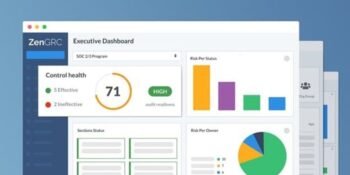Cloud computing services have become a popular option for personal use and businesses for several reasons, including cost savings, increased productivity, speed, efficiency, performance, and security. This article discusses cloud computing, its importance, categories, and market value.
What is Cloud Computing?
Cloud computing is simply computing over the Internet. It can be defined as using off-site systems that allow users to process, manage, store, and transfer information or computing resources. More specifically, cloud computing is the on-demand delivery of IT resources over the Internet. It is the most brilliant technological innovation of the 21st century.
Cloud computing delivers computing services to offer faster innovation, flexible resources, and economies of scale. Cloud computing services include servers, storage, databases, networking, software, analytics, and intelligence—over the cloud, and you will pay only for the services you use. Cloud computing services offer lower operating costs, run user infrastructure more efficiently, and scale as business needs change. It is a big shift from the traditional way companies think about IT resources.
“I don’t need a hard disk in my computer if I can get to the server faster… carrying around these non-connected computers is byzantine by comparison.” — Steve Jobs, Co-founder, Apple Inc.
Cloud Computing Categories
Cloud computing, a key enabler, has played a crucial role in supporting the continuous growth of modern industries by providing a range of solutions and services. The cloud services can be classified into three primary categories.
Infrastructure as a Service
Infrastructure as a service (IaaS) refers to online services that provide high-level APIs that abstract various low-level details of underlying network infrastructure, including physical computing resources, data partitioning, scaling, security, and backup. Cloud providers supply IaaS resources on demand from large equipment pools installed in data centers and typically bill on a utility computing basis.
Platform as a Service
Platform as a service (PaaS) delivers hardware and software tools over the Internet. It is a complete development and deployment environment in the cloud that enables the delivery of everything from simple cloud-based apps to sophisticated, cloud-enabled enterprise applications. PaaS allows users to avoid the expense and complexity; users manage the applications and services they develop, and the PaaS provider typically manages everything else.
Software as a service
Software as a service (SaaS) represents a revolutionary shift from the traditional software distribution model. Unlike its predecessor, SaaS is delivered over the Internet. The provider enables the consumer to use their applications or services running on cloud infrastructure. These applications are accessible from various client devices through a client interface or a program interface.
“If someone asks me what cloud computing is, I try not to get bogged down with definitions. I tell them that, simply put, cloud computing is a better way to run your business.” — Marc Benioff, Founder, Salesforce.
Why is Cloud Computing important?
Cloud computing providers offer flexibility, data recovery, little maintenance, easy access, and high security. It is part of a business model that helps drive innovations and services worldwide with fast computing deliveries. Before cloud computing, companies stored all their data and software on their hard drives and servers, which was slow, more complex, and less secure.
Scalability and Cost-effectiveness
Cloud computing enables businesses to scale their IT resources according to fluctuating demand. Instead of investing heavily in physical servers and infrastructure, which often involve high upfront costs and ongoing maintenance, companies can leverage the cloud to pay only for what they use. This model, often called “pay-as-you-go,” helps businesses reduce waste by optimizing resource allocation. Additionally, cloud providers offer various pricing models, such as reserved or spot instances, which allow organizations to further optimize costs based on their specific needs. This financial agility is crucial for businesses looking to grow without being hampered by large capital expenditures.
Enhanced Collaboration and Accessibility
Cloud computing liberates teams from the constraints of physical location, facilitating real-time collaboration. With cloud-based tools and applications, employees can access and work on shared documents, projects, and resources from anywhere worldwide, as long as they have an internet connection. This freedom and flexibility in accessibility support a modern, remote, or hybrid workforce, enhancing productivity by removing barriers to information sharing and decision-making. It also allows for quicker turnaround times on projects, as teams can collaborate seamlessly across time zones and geographical boundaries, ultimately leading to more agile and responsive business operations.
Advanced-Data Security Measures
Cloud providers offer businesses peace of mind with their advanced data security measures. These providers are at the forefront of data security, often implementing advanced security technologies and protocols that many individual businesses may not afford or maintain independently. They employ end-to-end encryption, data masking, and artificial intelligence-based monitoring to detect and prevent unauthorized access or data breaches. Additionally, most cloud platforms adhere to stringent compliance standards (such as GDPR, HIPAA, and ISO certifications), ensuring that data handling practices meet the regulatory requirements of various industries. This high level of security and compliance helps build customer trust and safeguards critical business data.
Innovation and Competitive Advantage
By using cloud computing, businesses can redirect their focus and resources from managing IT infrastructure to driving innovation. Cloud platforms offer many valuable tools and solutions, such as artificial intelligence, machine learning, data analytics, and Internet of Things (IoT) capabilities, which can be easily integrated into existing workflows. The solutions allow companies to experiment with new technologies and market innovative products or services faster. The ability to quickly develop, test, and deploy applications in a cloud environment gives a competitive edge, enabling businesses to respond to rapidly changing markets and customer demands.
“Cloud computing is really a no-brainer for any start-up because it allows you to test your business plan very quickly for little money. Every start-up, or even a division within a company that has an idea for something new, should be figuring out how to use cloud computing in its plan.” — Brad Jefferson, Animoto CEO. 2009.
Cloud Computing Markets
The TechGolly market analysis team’s decision indicates that the global cloud computing market, valued at at least USD 755 billion in 2024, will soar to USD 1,840 billion by 2030. This growth trajectory presents a promising future for the industry with a projected compound annual growth rate (CAGR) of 14%—16% from 2024 to 2030.
“There was a time when every household, town, farm or village had its own water well. Today, shared public utilities give us access to clean water by simply turning on the tap; cloud computing works in a similar fashion. Just like water from the tap in your kitchen, cloud computing services can be turned on or off quickly as needed. Like at the water company, there is a team of dedicated professionals making sure the service provided is safe, secure and available on a 24/7 basis. When the tap isn’t on, not only are you saving water, but you aren’t paying for resources you don’t currently need.” — Vivek Kundra, Federal CIO, United States Government, 2010.
Conclusion
Cloud computing services have transformed how businesses and individuals use technology, offering flexibility, scalability, cost savings, and enhanced security. Cloud computing enables companies to innovate rapidly, streamline operations, and remain competitive in a fast-paced digital world by providing on-demand access to IT resources. The cloud services market continues to grow as organizations recognize the benefits of cloud solutions, from increased collaboration and productivity to improved data security and compliance. As the global economy increasingly relies on digital infrastructure, cloud computing is an essential driver of technological advancement and business growth, reshaping industries and enabling new possibilities for the future.










